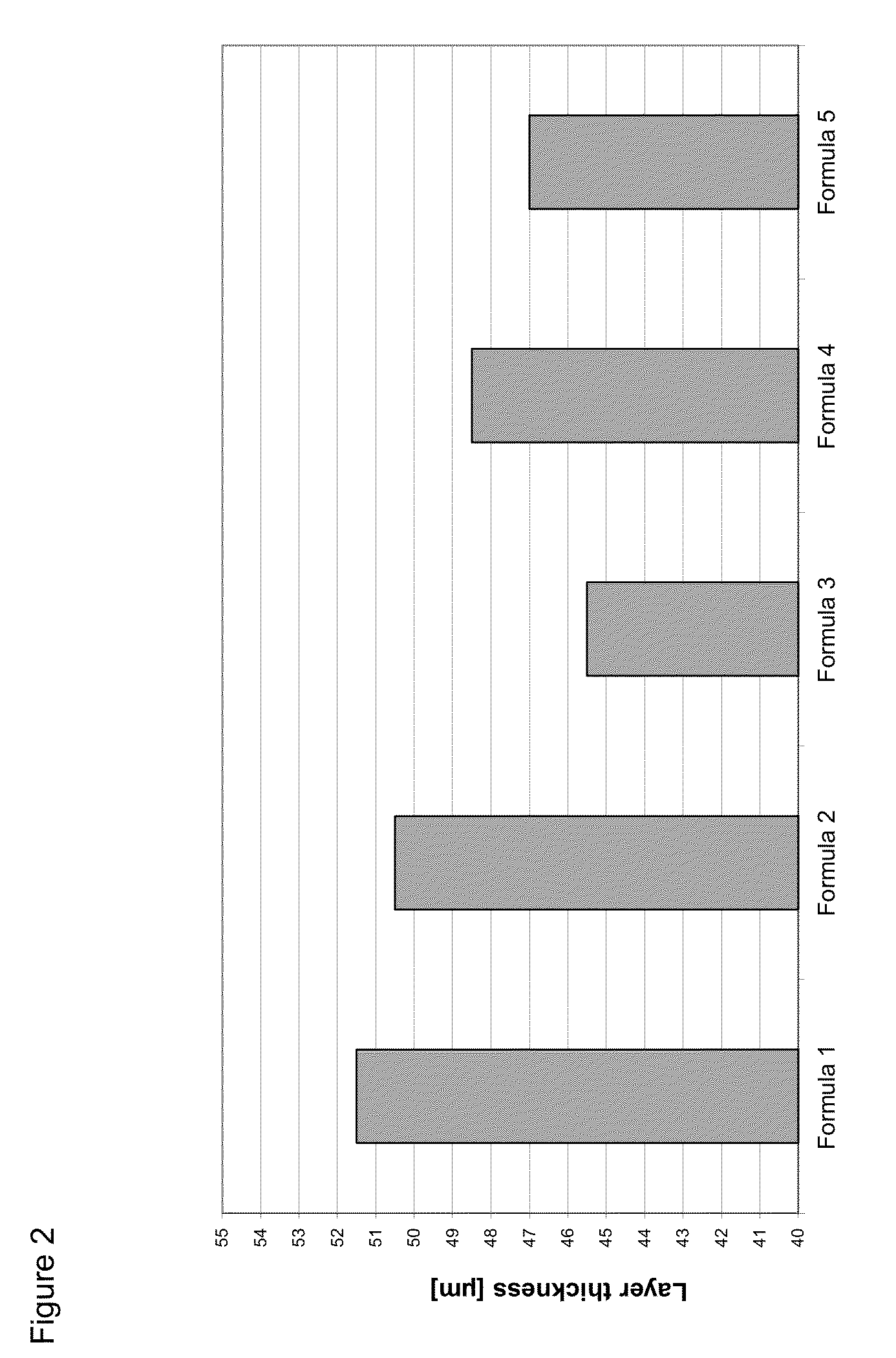Functionalized particles and use thereof
a technology of functionalized particles and functionalized particles, applied in the field of functionalized particles, can solve the problems of poor hot water resistance, poor attachment of the binder to the filler surface, and altered optical properties, and achieve the effect of fewer operating steps
- Summary
- Abstract
- Description
- Claims
- Application Information
AI Technical Summary
Benefits of technology
Problems solved by technology
Method used
Image
Examples
preparation examples
[0066]The functionalized particles which can be used in accordance with the invention for powder coatings in the compositions of the invention, possessing covalently bonded, reactive functional radicals, are prepared as follows in the preparation examples below.
preparation example 1
[0067]In this preparation example a TiO2 rutile pigment was subjected to an organic aftertreatment as follows.
[0068]20 kg of Hombitan R210 (rutile pigment) filtercake with a solids content of 50% are dispersed in 20 liters of water, using a dissolver at 750 rpm, for 30 minutes. Added to this suspension are 1.5% (based on solids) of CoatOSil MP200 Silane® (prehydrolyzed epoxysilane from Momentive), and mixing is continued for five minutes at a speed of 750 rpm. The suspension is subsequently dried via a spraying tower with an entry temperature of 400° C. and an exit temperature of 120° C. The discharge from the spray dryer may optimally also be ground using a pinned disk mill or jet mill.
preparation example 2
[0069]In this preparation example a BaSO4 pigment was subjected to an organic aftertreatment as follows.[0070]BaSO4 filtercake with 35% solids content and a d50.3 of the volume distribution of d50.3=0.7 μm (measured using a CPS disk centrifuge, model DC2400 from CPS, USA)[0071]deionized water with a conductivity of approximately 3 μS / cm[0072]5% strength aqueous sodium hydroxide solution[0073]5% strength hydrochloric acid[0074]Na2SiO3 solution with 384 g SiO2 / l[0075]NaAlO2 solution with 262 g Al2O3 / l[0076]BaS solution with 50-55 g BaS / l
[0077]2500 g of BaSO4 paste were weighed out into a glass beaker and suspended with deionized H2O to give 3300 g. The suspension was heated to 70° C. and then adjusted to a pH of 7 using aqueous sodium hydroxide solution. A barium excess of around 5 g Ba2+ / l was then set using 350 ml of BaS solution. The pH was again adjusted to 7, using hydrochloric acid, and then Na2SiO3 solution (0.1% SiO2 based on BaSO4) was added. The pH was adjusted to 4 using hy...
PUM
| Property | Measurement | Unit |
|---|---|---|
| thickness | aaaaa | aaaaa |
| thickness | aaaaa | aaaaa |
| temperature | aaaaa | aaaaa |
Abstract
Description
Claims
Application Information
 Login to View More
Login to View More - R&D
- Intellectual Property
- Life Sciences
- Materials
- Tech Scout
- Unparalleled Data Quality
- Higher Quality Content
- 60% Fewer Hallucinations
Browse by: Latest US Patents, China's latest patents, Technical Efficacy Thesaurus, Application Domain, Technology Topic, Popular Technical Reports.
© 2025 PatSnap. All rights reserved.Legal|Privacy policy|Modern Slavery Act Transparency Statement|Sitemap|About US| Contact US: help@patsnap.com



